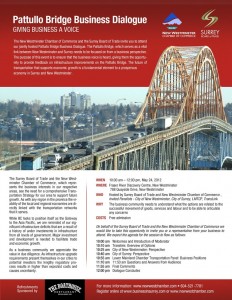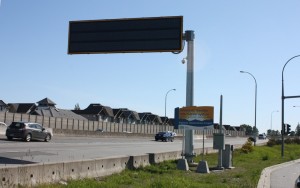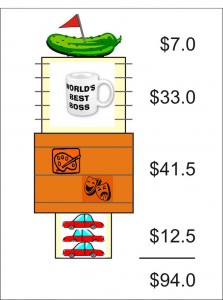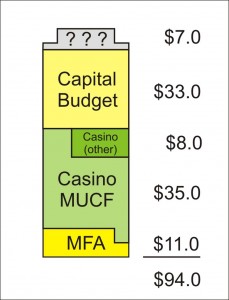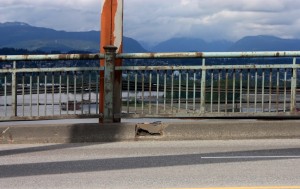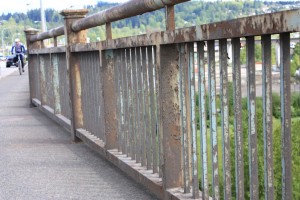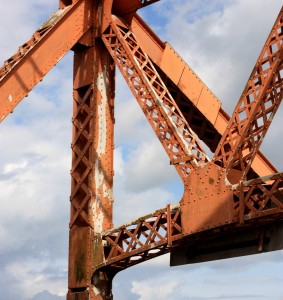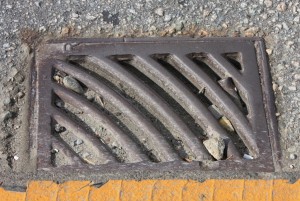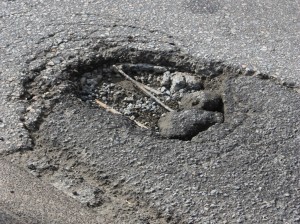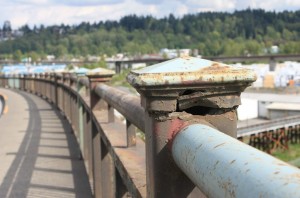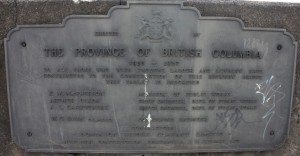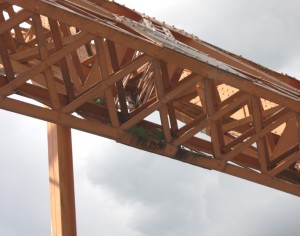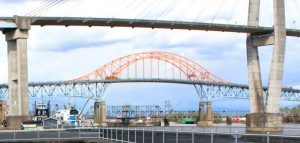Look, it is pretty clear our relationship go off on the wrong foot. I’m the guy on the bike you tried to kill today? In case there were more than one, I was the one on Garden City Way in Richmond.
Admittedly, there were quite a few bikes out today, it being “Bike to Work Week” and all, but I try to ride my bike in a few times every week, so I’ll probably see you again on Garden City Way, so I thought we should talk this thing out.
You see, when you tried to merge in front of the traffic on Garden City, that narrow little lane you were driving up was actually a bike lane. Notice how the shape painted on the pavement looked like the bike I was riding, and how the lane was too narrow for your car? That is why I was taking up the whole lane, riding along at 30km/h and minding my own business. I did not realize I was preventing you racing up the right side of the road in the bike lane to get a premium spot in front of the cars tolling along Garden City at 50km/h in the car lane (the wide one, no bikes painted in it). First off, let me profusely apologize for potentially causing you to be behind another car in rush hour in Richmond, it may have cost you literally seconds that you would not have been able to make up until at least the next stop light.
Since I was in the bike lane, moving at a pretty brisk pace, I was a little surprised to get honked at by someone riding my back wheel in a crappy late model Jetta or such shitbox in the bike lane. Hence, when I turned by body around to look at the source of the honk, and saw you 16 inches off my back wheel, that look on my face was one of surprise and confusion. I honestly did not understand what you expected me to do. My options were to continue to ride in the bike lane (now slower than 30km/h, as I had to sit up and look behind me to see what the fuss was all about), or, I suppose, to throw myself into the ditch and get out of your way. Although it appeared the latter was your preferred option, I didn’t really see that as the best bet for my getting home in time to make my 6:30 meeting with the Bicycle and Pedestrian Advisory Committee.
As I turned back forward, I heard the crappy little overwound 4-banger in the shitbox you lease for $150/month begin to pick up revs. Apparently, the people over in the car lane exercised some defensive driving skills (you can Google that) or became more cognizant of the importance of your mission, and moved back, permitting you to now occupy the car lane. Therefore, you felt the need to throw a few kernels on the popcorn popper you call an engine to gun past me. Not yet fully in the car lane, you passed rather close to me. And at this point, I am ashamed to admit, I might have used a swear word in the interrogative.
Lucky you pay an extra $10/month for the factory sunroof option in the shitbox, as you looked through it at me and perhaps you could hear me mutter under my breath, in the spirit of genuine curiosity: “What the Fuck?”. Note it was said with no anger, as I was, at this point, just confused by your behaviour. I had not yet managed to calculate the situation to the level where I could generate actual anger. Now, far be it from me to opine on another’s personal space issues, we only just met a few seconds earlier, but I may suggest that any time you are looking at a passing cyclist through the sunroof when that cyclist is in the bike lane, you are probably too close. Apparently, you felt this was not close enough…
Now let me be clear here. When you took that opportunity to purposely swerve your car into the bike lane and force me into the ditch, you were trying to kill me. That was, for lack of a better term, attempted murder. I evaded contact through luck, nothing else, I cannot even thank my usually cat-like reflexes, as they I have none. When 3000lbs of wheezing shitty steel & plastic at speed contacts a cyclist going 25km/h on an asphalt road with a grassy shoulder before a hard sidewalk with telephone poles and sign standards astride, the possibility of that cyclist dying is not marginal. The chances of serious bodily harm are large, the chances that I would walk away from the incident are very small. It might have also dented your car… what would that do to your lease payments!?!
You did something very stupid, for which my dying was not an impossibility.
That loud horn you heard was the guy in the Sierra Waste truck two cars behind you, expressing his surprise and distain for what he witnessed. He stopped to make sure I was OK, and was tempted to run you down. I assured him I was OK, and he should probably not get involved. When he asked why you were trying to kill me, I had to admit I had no answer. Maybe the combination of the steroids that are accelerating your male pattern baldness (the gelled spikey hair doesn’t hide all) and the daily low-level exposure to Aqua Velva was rotting your brain. Or maybe you are just a dangerous asshole who shouldn’t be allowed to operate machinery.
Anyway I have your car type, I have your licence plate, I saw your dumbass visage through the sunroof, and I have the contact info for the guy in the Sierra Waste truck, whom I will not name, but will only refer to as “willing eye witness”. I will be meeting with the Richmond Police tomorrow. I do some work with them, pretty conscientious guys and gals for the most part. I know a few members who like to ride bikes. Maybe I’ll show up with donuts.
Oh, and now that I have done the math and discover anger is an appropriate response, I should let you know. If you come back to your crappy leased financial burden with licence plate 707 PRE one day, and find someone has unthreaded the valve cores from all four tires and your air vents smell of urine? You will know I noticed your car parked there and left you my calling card. Smells better than Aqua Velva.
